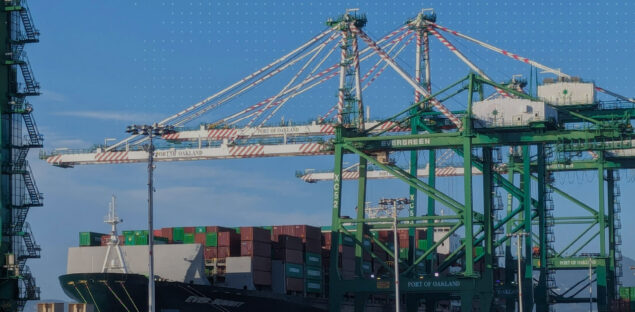The illicit drug market in the U.S. has shifted from being solely dominated by plant-based substances like cocaine and heroin to being saturated with synthetic substances like fentanyl and high-purity methamphetamine. The trading system underlying this market largely consists of entities based in the U.S. (consumers), Mexico (manufacturers), and China and India (materials suppliers).
Mexican transnational criminal organizations (TCOs), the main producers and distributors of synthetic drugs in the U.S., rely on networks of chemical brokers, logistics firms, and mainly Chinese and Indian chemical companies to procure precursors and other essential chemicals to manufacture these drugs.
The U.S. Drug Enforcement Administration (DEA) maintains two lists of controlled chemicals that fall under the legal authority of the Controlled Substances Act. List I chemicals include known precursors or core components to manufacture illicit drugs. These chemicals are under the most stringent controls, generally requiring registration for manufacturing, distribution, import, and export.
Many of these essential chemicals are considered dual use, however, as they are also used in agriculture, food processing, and pharmaceutical industries. Consequently, it’s challenging for investigators and compliance teams to differentiate between shipments of chemicals bound for licit and illicit use.
During our webinar Identifying High-Risk Importers of Synthetic Drug Precursors, we discuss typologies that law enforcement and organizations can use to help distinguish between licit and illicit importation of essential chemicals as they respond to heightened regulation and scrutiny.
Challenges for the regulators and the regulated
A major challenge for law enforcement investigators is parsing out shipments of chemicals — and equipment — that are at high risk of being diverted for illicit drug production from those that are more likely used for legitimate purposes.
Financial institutions, meanwhile, face a risk of unwittingly being used to launder illicit proceeds and giving TCOs access to legitimate financial systems to help them cover up their operations. The recent Executive Order 14157, which designates six Mexico-based entities as Foreign Terrorist Organizations (FTOs), could mean that any payments made by a company to cartel-affiliated organizations or individuals, and any logistical assistance provided to them, could be construed as support of terrorist organizations.
Identifying red flags that signal high-risk importers
Our webinar explores three trade typologies that could indicate increased risk for precursor chemical diversion. Let’s look at one of these typologies in more detail.
A key red flag for investigators and compliance teams is a general trading company or freight forwarder dealing in a wide variety of non-chemical goods plus known precursor and essential chemicals. This red flag requires an understanding of an entity’s trade history as a whole to identify shipments that are anomalies.
In 2022, a Mexican national news outlet, reported that Mexican authorities were investigating three companies for supplying precursor chemicals to cartels. One of the companies identified was a Guadalajara-based general trading firm called Corporativo Y Enlance Ram.
Trade data in Sayari Graph reveals that a vast majority of this company’s imports are for non-chemical goods such as toys, sports and outdoor equipment, bags, cases, and containers. From this data, Corporativo Y Enlance Ram appears to be a completely benign trading firm dealing in common consumer items.
Trade data for Corporativo Y Enlance Ram reveals importation of toys, bags, and sports equipment.
However, a deeper look at Corporativo Y Enlance Ram’s trade history shows the company has also imported a small number of chemical shipments. These imports are unusual for a company that appears to deal almost exclusively in items such as toys and bags.
Filtering the imports for the HS codes for chemicals shows that Corporativo Y Enlance Ram has imported at least five shipments of a chemical called sodium borohydride. The shipments all came from the same Chinese chemical firm. The DEA added sodium borohydride to the SSL in 2023 due to its use as a reducing agent in the production of fentanyl and fentanyl analogs.
A deeper look at the data uncovers imports of chemicals that can be used as a precursor in the production of fentanyl.
Additional searching in Graph shows that Corporativo Y Enlance Ram has also imported several shipments of methylformamide and tartaric acid over the last couple of years from the same Chinese chemical supplier. The weight reported in Graph for these shipments indicates significant volumes: approximately 10 metric tons of sodium borohydride and 49 metric tons of methylformamide.
These shipments of known essential chemicals represent anomalies relative to Corporativo Y Enlance Ram’s overall import history. It is impossible to assert based on trade data alone that any of these shipments were diverted for illicit drug production. However, the specific chemicals imported by Corporativo Y Enlance Ram, combined with the large volumes of those shipments and the fact that the company does not appear to operate in the chemical industry, raise serious questions as to the ultimate end use of those chemicals.
How Sayari helps identify and mitigate risk of precursor imports
Depending on the industry, some companies may have legitimate reasons for certain essential chemicals to comprise a majority of their imports. Therefore, an entity’s trade history should form part of a more comprehensive analysis of other potential risk factors, such as the entity’s industry and its public-facing profile.
Sayari is exceptional at helping organizations identify typological risk based on a company’s trade history, behavior, and relationships. Using Sayari, analysts can interrogate billions of trade and corporate records using powerful, attribute-based search capabilities. Investigators can also explore patterns using HS codes or product descriptions to map additional entities and trade routes linked to illicit supply chains.
Sayari solutions help organizations identify red flag typologies that can then be identified at scale so agencies can identify potential targets for investigation and financial institutions can identify potential high-risk customers for further adjudication.
Watch our webinar for a deep dive on two other typologies associated with high-risk importers of synthetic drug precursors.



